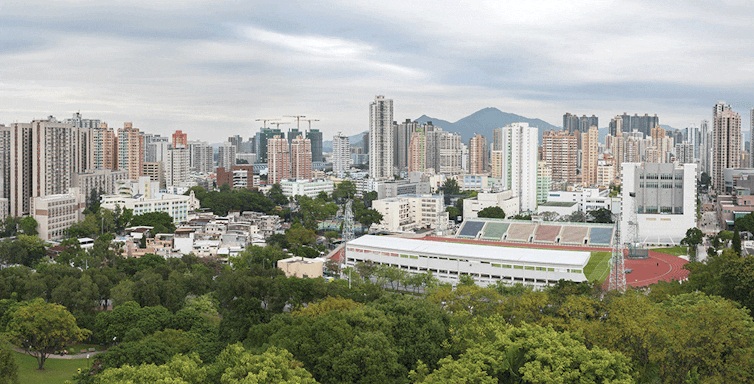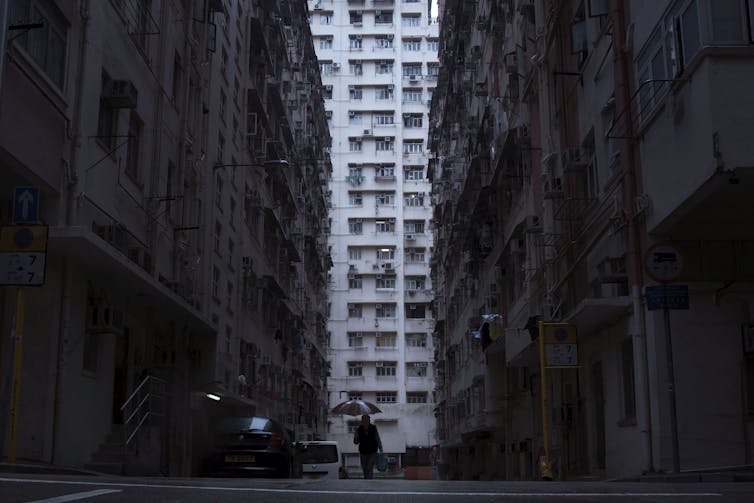How single women are driving gentrification in Hong Kong and elsewhere
A new study examined how growing numbers of single women in one of the world's most expensive cities are contributing to its gentrification.

Gentrification is reshaping urban areas all around the world, displacing large segments of the population and making cities increasingly unaffordable.
In San Francisco, only 12 percent of households can afford a median priced home, which is over US$1.5 million. In Hong Kong, the world’s most unaffordable city alongside Singapore and Paris, there are currently some 90,000 families living in inadequate housing conditions.
We study urban development and its social, physical and environmental impacts. We recently examined two decades of cultural transitions in Hong Kong with a focus on how the changing status of women and attitudes toward marriage have altered the real estate market.
What we found is that single women in Hong Kong have played a surprising and little-studied role in gentrification.
Marrying later
Women have been marrying later in life around the world for many years. The extent of this trend has varied globally, though, reflecting different levels of cultural change and resulting in different regional economic impacts.
Throughout the second half of the 20th century, East and Southeast Asia, in particular, witnessed a growing number of single men and women. From 1950 to 1990, the number of young single women across Asia – China excluded – increased almost fourfold, from 22 million to 82 million.
One reason this trend has happened outside of China is cultural. If you’re a woman and you’re single on the mainland, it’s viewed negatively. Unmarried women over the age of 27 are called “sheng nu,” or “leftover women.” But in Hong Kong it’s seen in a more positive light. There, they’re known as “xing nu,” or “blooming women.”
This trend has produced a ripple effect throughout the economy, including the property market and local redevelopment, as the increased number of single women – who are also attaining higher-paid jobs – boosts demand for housing.

Gentrifying neighborhoods
We analyzed standardized census data from 1986 to 2006 across all of Hong Kong, with a focus on exploring the impact of women on neighborhoods that were gentrifying. The analysis, which took four years to complete, identified about 34 percent of Hong Kong as experiencing gentrification.
The process of gentrification involves capital reinvestment into neighborhoods that encourages their physical upgrading, along with the displacement of groups of lower incomes who have traditionally occupied these communities.
A telltale sign of gentrification is the shift from rentals to owner-occupied housing. The share of units with owners living in them in these areas climbed from 45.5 percent in 1986 to 64.2 percent two decades later.
During the same time period, the number of people employed in traditional, working-class sectors like manufacturing more than halved, from 177,917 in 1986 to 73,870 in 2006. At the same time, the number of residents employed in finance, insurance, real estate and business services tripled, from 49,276 in 1986 to 150,237 in 2006.
But it is not only the occupational structure that is changing within these neighborhoods. These gentrifying areas have been increasingly dominated by single women.
Single women increased by 53.2 percent over the two decades, compared with a rise of just 15.2 percent among single men. Similarly, the number of divorced and separated women in these neighborhoods rose at twice the pace of divorced and separated men.
As a result, the share of households led by single women, whether never-married or divorced, jumped to 47.1 percent in 2006 from just 25.8 percent two decades earlier.

Global trends
Overall, not only are single women emerging as a growing and critical aspect of Hong Kong’s economy, they are also driving the city’s increasingly unaffordable real estate market.
While our study focused on Hong Kong, we believe there is reason to think the same thing is happening in cities across the world, such as New York, London, Vancouver and Singapore. That’s because these cultural trends – a rising number of single women in high-paying jobs and a delay in tying the knot – have been happening elsewhere for many years.
For example, in the U.S., Pew projects that when today’s young adults reach their mid-40s to mid-50s, a quarter of them will never have married, compared with less than 10 percent a few decades ago. And in Iceland, some 70 percent of children were born to single mothers in 2016, more than double the share in 1970.
This is not to say that we should blame women for gentrification. We believe their growing representation and success in the workforce in Hong Kong and elsewhere is something to be celebrated. And women at the other end of the income spectrum, particularly single mothers, bear the brunt of gentrification.
Minting Ye is a senior research analyst at Compass
Igor Vojnovic does not work for, consult, own shares in or receive funding from any company or organisation that would benefit from this article, and has disclosed no relevant affiliations beyond their academic appointment.
Read These Next
From truce in the trenches to cocktails at the consulate: How Christmas diplomacy seeks to exploit s
World leaders like to talk up peace at Christmastime. But alongside the tales of seasonal breaks in…
As DOJ begins to release Epstein files, his many victims deserve more attention than the powerful me
Powerful men connected to Jeffrey Epstein are named, dissected and speculated about. The survivors,…
Medieval peasants probably enjoyed their holiday festivities more than you do
The Middle Ages weren’t as dreary and desperate as you’d think, and peasants often had weeks of…





